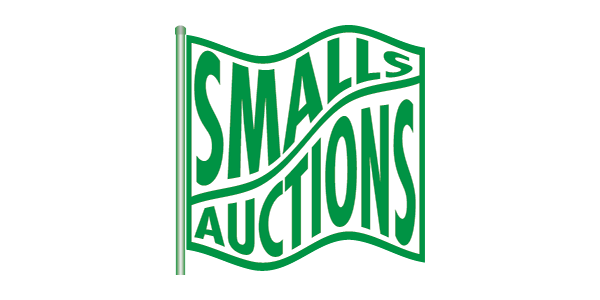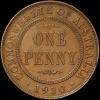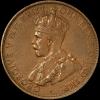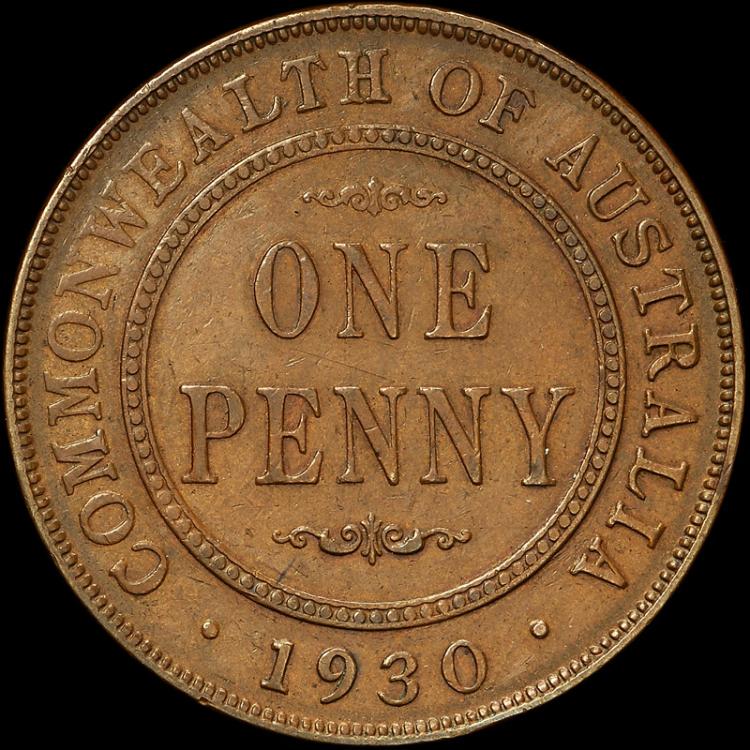Lot 187


Extremely Rare
-
Literature:
- 355 Medium:
- Collectibles Circa:
- Coins, Monies & Stamps Notes:
- By 1930 Australia was caught up in the maelstrom of the world-wide ‘Great Depression’ and with its economy in rapid retreat had little need to strike more coins. Besides a small mintage of halfpennies, no other coins were struck for circulation that year, a confusing fact that should raise the eyebrows of anyone lucky enough to have a 1930 Penny in their collection. Folklore has produced many colourful stories about how the 1930 Penny came to be struck but the answer in fact is far simpler. Although the Australian Treasury saw no need to top up the country’s penny supply, the Melbourne Mint took it upon itself to produce three 1930-dated reverse dies in July of that year and, on August 13, used one to strike twelve specimens all with an Indian obverse taken from a master die it had received directly from the London Mint in 1922. Except for the twelve specimens no further pennies were struck by the Melbourne Mint in 1930 and it was not until August of 1931 that the three 1930 reverses combined with both English and Indian obverse dies were used sparingly for ‘experimental’ purposes to test the coin presses. Production from the 1930 Penny dies is recorded as nil thousands, i.e. less than 1,000 coins per die which even then appears grossly overstated regarding the English obverse type of which only three surviving examples have surfaced. Evidence suggests that only one bag of blanks was used which could have produced 2,400 coins. However, if it is assumed that the two dies allied with Indian obverses produced under 1,000 coins each and an insignificant number of coins were struck using the English obverse, then the mintage of the 1930 penny must be well under 2,000. The common consensus is that around 1,500 coins were struck in total of which all but a few had an Indian obverse. The machinery used for striking coins was at best rudimentary and, as there were no counters on the coin presses, the annual coin production figures was deduced by a count of the number of bags of blanks used. For the stocktake, it was also the common practice for small runs of coins struck for ‘experimental’ purposes when testing the presses to be returned to an open bag of blanks so that they would be included in the count. It is therefore probable that through the disbursement of the bag containing the ‘experimental’ 1930 pennies, Australia's best-known rarity, made its way into circulation, first coming to the notice of collectors in the 1940s. There are enough penny blanks found in circulation to confirm the theory that bags containing a mixture of blanks and struck coins were on occasion inadvertently released. The 1930 ‘English Obverse’ Penny with a known surviving mintage of just three is possibly the World’s rarest circulating copper coin. In our April 7th Sale Smalls Auctions offers the finest known example graded PCGS EF45.
Accepted Forms of Payment:
American Express, MasterCard, Money Order / Cashiers Check, Paypal, Visa, Wire Transfer
Shipping
AUSTRALIA: Purchases within Australia will be charged a MINIMUM SHIPPING FEE of $5.50 and will be sent by Registered Post. Additional insurance is optional at the buyer's expense.
INTERNATIONAL: Overseas purchases will be charged a MINIMUM SHIPPING FEE of $20.00 and will be sent by Registered Post International. Additional insurance is optional at the buyer's expense.
Both Australian and International packages are traceable in transit and require a signature on delivery.
Smalls Auctions
You agree to pay a buyer's premium of up to 18.5% and any applicable taxes and shipping.
View full terms and conditions
| From: | To: | Increments: |
|---|---|---|
| A$0 | A$99 | A$5 |
| A$100 | A$999 | A$10 |
| A$1,000 | A$4,999 | A$50 |
| A$5,000 | A$9,999 | A$100 |
| A$10,000 + | A$250 |




